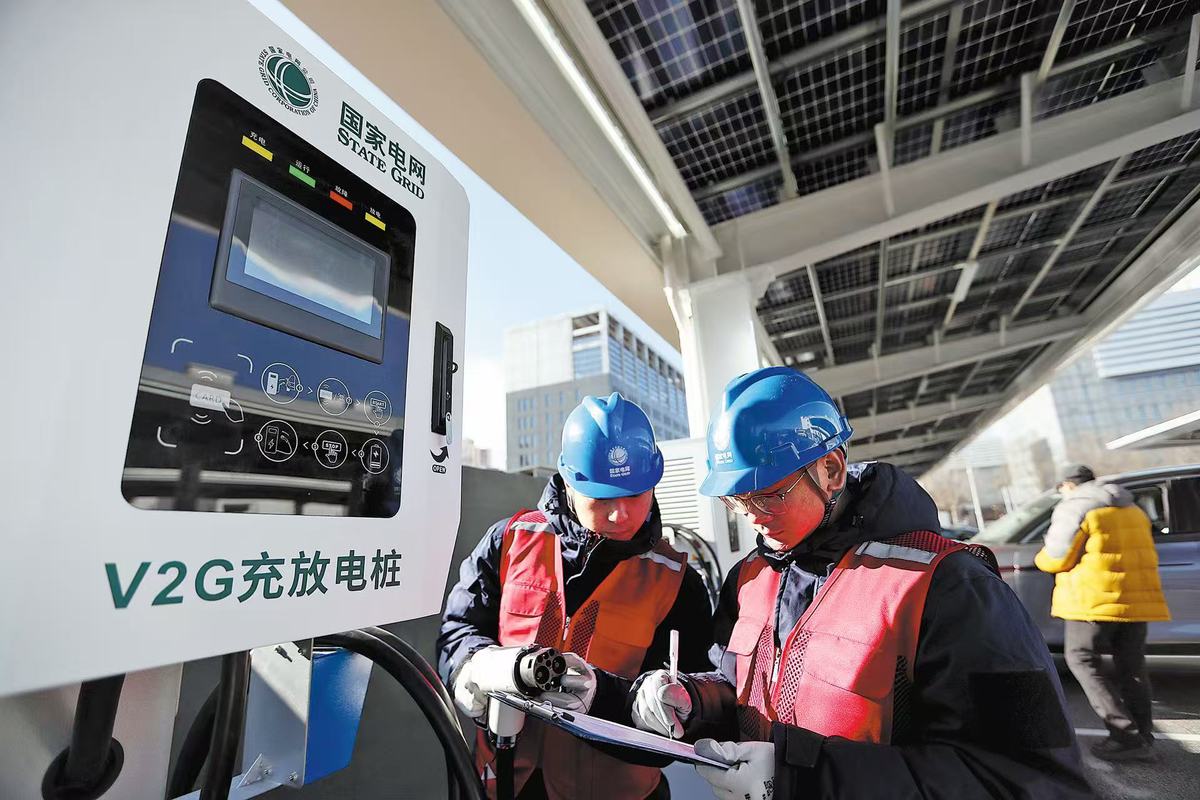Pilot projects turn EVs into batteries for power grid


China's recent pilot projects to use electric vehicles as batteries to shore up power supply on the grid during spikes in demand are expected to create significant opportunities for the sector, said industry experts and company executives.
The National Development and Reform Commission recently announced 30 projects to boost vehicle-to-grid (V2G) interaction across nine cities in China — including Beijing, Shanghai, and Guangdong province's Shenzhen and Guangzhou — aiming to support the construction of new energy and power systems and promote the integration and interaction of new energy vehicles with power grids.
V2G technology allows EVs to function as flexible energy resources. They can store electricity and send it back to the grid, so as to avoid peak demand while also becoming an alternative revenue stream for homeowners or operators of charging stations, said the commission.
The notice specifies that power grid companies will set up pilot initiatives while provincial governments are designated to spearhead the growth of charging facilities. The energy regulator is tasked with supporting the integration of grid-connected vehicle applications into power trading.
Wang Zhiqiang, director of the energy division at the Shanghai Municipal Development and Reform Commission, said that V2G enables EVs to not only meet personal travel needs, but also alleviate grid pressure by discharging power during periods of electricity shortage, a win-win situation for both individuals and society.
Wang said he is bullish about the tech, and believes that as car owners' awareness and relevant technologies improve, their willingness to actively participate will increase and the frequency of vehicle discharge will rise.
V2G will play a greater role in peak shaving and valley filling for the grid, as well as balancing fluctuations from new energy sources. This holds profound significance for stabilizing the power system and achieving low-carbon development, Wang said.
According to the State Grid Shanghai Electric Power Research Institute, V2G power sales provide investors with predictable and stable earnings expectations.
This inherent reliability in the revenue generated from selling power back to the grid serves as a significant incentive, offering a consistent financial outlook that can attract and reassure potential investors in V2G technologies and services, it said.
It is also essential to establish precise discharge power standards for automotive batteries to ensure they can consistently meet the electricity grid's requirements, it added.
Du Yang, deputy director of the power technology center at the institute, said there is currently a lack of a clear definition for the optimal discharge power range for car batteries.
"High-power V2G discharge, for example, could significantly impact the power grid," Du said.
"Its necessity must be weighed against actual electricity demand and the grid's capacity to handle such loads must be assessed."
Zhu Gongshan, chairman of GCL (Group) Holdings Co Ltd, China's largest private power firm, said earlier that China's efforts to step up V2G, together with other auxiliary services, including energy storage, virtual power plants and smart microgrids, are essential for grid stability by quickly increasing or decreasing power output (peak shaving) and providing backup power.
It marks a pivotal step in the country's energy transition by formally integrating emerging players into the auxiliary power services market, Zhu said.
"Granting distributed energy resources equal market standing with traditional power generators will unleash their flexible potential, thereby accelerating the shift from policy-driven to market-driven growth," he added.
Zhu said that while the large-scale application of vehicle-grid interaction (VGI) has initially demonstrated feasibility, further standardization is still needed.
"Standardizing EV charging infrastructure and enhancing grid interaction capabilities are critical for scaling vehicle-grid integration, and a power sector driven more by market forces is likely to enhance the efficient allocation of resources," he said.
GCL aims to continue intensifying research and development in V2G interaction technologies, fostering integration between energy storage and renewables, Zhu said.
zhengxin@chinadaily.com.cn




































